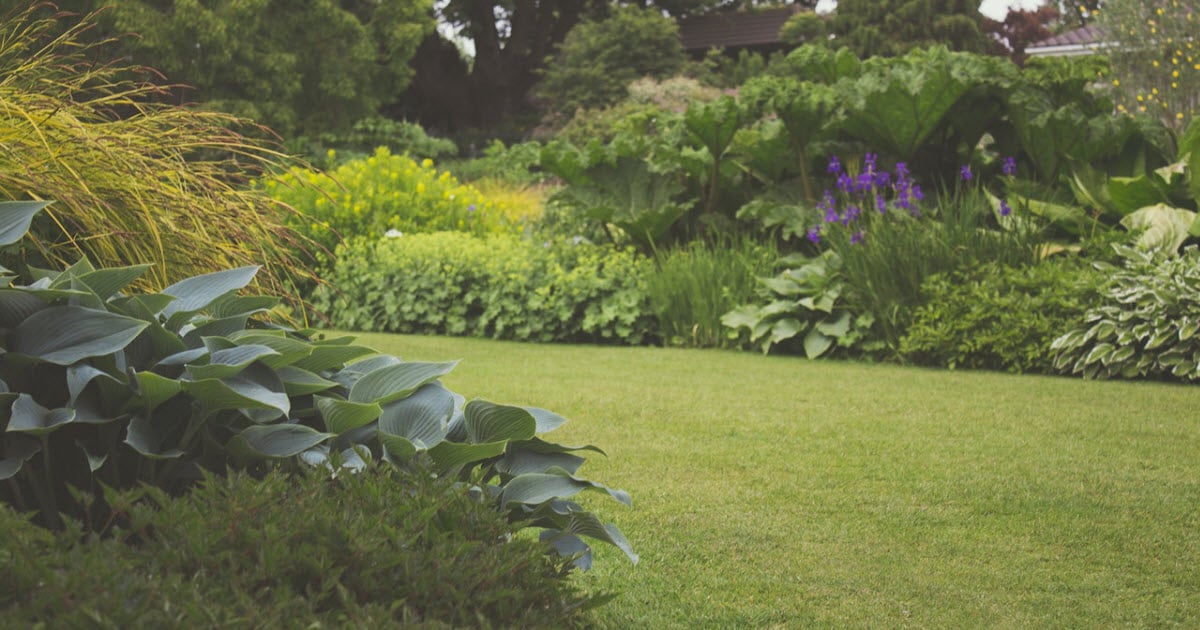If you suspect your yard is not as healthy as it once was, chances are your lawn is lacking essential nutrients. Don’t expect an extra round of sprinklers or fertilizers to restore your lawn. In fact, the acidity of your soil may be the root of the problem. If a lawn becomes too acidic, it is difficult for soil to receive nutrients. This results in lawn discoloration and an abundance of pesky weeds and mosses. In this article I’ll explain how to tell if your lawn needs lime, and why you may want to apply lime to amend your turf.

This article was last updated on by Lawn Chick Owner Sarah Jameson
Article content reviewed for accuracy by Certified Horticulturist Nicole Forsyth, M.S.
Homeowners use lime to neutralize soil’s pH and promote healthy, lush grass to grow.
Lime is a soil amendment derived from burnt limestone. Otherwise known as garden lime, it contains calcium, potassium, and magnesium. Its primary purpose is to balance soil’s pH so grass and plants can access macronutrients.
Once lime is applied, it can take anywhere between 6 months to 1 year to see the results, and to fully see the effect it can take 2-3 years.
Fortunately, how to tell if your lawn needs lime is simple. The most accurate way to determine if your lawn needs lime is by testing your yard’s soil pH with an inexpensive test kit (I like this one).
Alternatively, you can order a lab-based soil test kit for a comprehensive soil analysis (which will include the precise pH level of your yard’s soil.
| LawnChick.com is reader supported. If you make a purchase after clicking a link, I may earn a commission at no additional cost to you. |
This article lists five signs your lawn needs (or can benefit) from a lime application.
The pH Balance of Your Soil Matters
Lawns are naturally acidic and can become acidic over time. An ideal pH for soil is 6.5. However, a pH range between 6-7 is considered healthy for lawns. There are a number of reasons that cause pH imbalances. They include natural leaching, excessive irrigation, and nitrogen fertilizer to name a few.
In several regions throughout the US, lawns do not receive enough nutrients from native soil. For example, rainy climate regions are susceptible to acidic soil and can benefit from lime. Clay and sandy soils also tend to have a low pH, affecting lawn quality.
The best way to test your lawn’s acidity and macronutrients are by using a simple pH testing kit sold at your local home improvement store, or creating your own at-home soil test.
Lawn Appearance

A depleted yard accompanied by lawn weeds or moss may need a lime application. Weeds are a common occurrence in any yard, but if there’s an excessive amount of them specifically knotweed, clover, and dandelion then your soil should be tested. These weeds flourish in acidic soil.
Moss grows in areas inhospitable to grass regardless of pH level. If your grass can’t grow because of a lack of nutrients, moss appears. So, if an abundance of moss is present in your lawn, this can signify your grass is not receiving the nutrients it needs. If this occurs, test the soil’s pH. If the soil is acidic, liming your garden may eliminate moss.
Unresponsive Lawn Fertilizer
You noticed your lawn is a bit dull, so you applied fertilizer expecting it to bounce back. Except this time around, you added fertilizer and noticed that it didn’t give the boost your lawn needed. If an application of fertilizer does not improve your grass this may be a sign your lawn needs lime. Fertilizer cannot properly release nutrients in soil that is too acidic or alkaline.
Disease and Insects
Signs of insects and diseased grass is an obvious sign that something is not right. A diseased lawn is unsuitable to protect itself from insects and pests. Lime can restore lawn with nutrients, and in turn, repel pests.
Generally, yellow grass indicates soil diseases, nutrient deficiencies, or lawn dormancy. Yellow grass can also be a sign that soil is acidic. A soil test can rule out any nutrient deficiencies and pH imbalances.
Drought Stress

Dry, hot seasons can take a toll on any lawn. However, acidic lawns cannot cope well with drought or hot, dry climate. If you notice your grass is thinning or has difficulty recovering from dry weather, it may be time to test your lawn’s soil. Liming your lawn may restore your grass’ strength and vigor.
So, How to Tell if Your Lawn Needs Lime?
Lime is commonly tested during Fall because it gives the soil amendment enough time to work its way in the soil. Before taking the soil test, aerate your lawn so lime can reach deep in the roots. And, make sure to avoid testing recently fertilized or wet soil.
A few months after your lime application, test your soil’s pH to see if another application is needed. Once you receive the desired pH level, it should last for 2 or 3 years before you need to apply lime again, but certified horticulturist Nicole Forsyth recommends that you “test your soils every 1-2 years and apply lime if necessary.”
Identifying signs that your lawn needs (or can benefit) from lime has never been easier. A gardener’s secret to lush, green lawns, lime is a must-have for all homeowners. Lime is an excellent addition to lawn fertilizer that provides grass and plants with essential nutrients. It will take weeks until you’ll see the benefits of liming your garden, but the results are worth the wait.
The Lime I Use on My Lawn
I use and recommend Solu-Cal Enhanced Lime on my lawn and in my gardens. I’ve had great results using it on my acidic soil. You can order it online, but it’s usually available for less if you can find it locally.














4 thoughts on “How to Tell if Your Lawn Needs Lime”